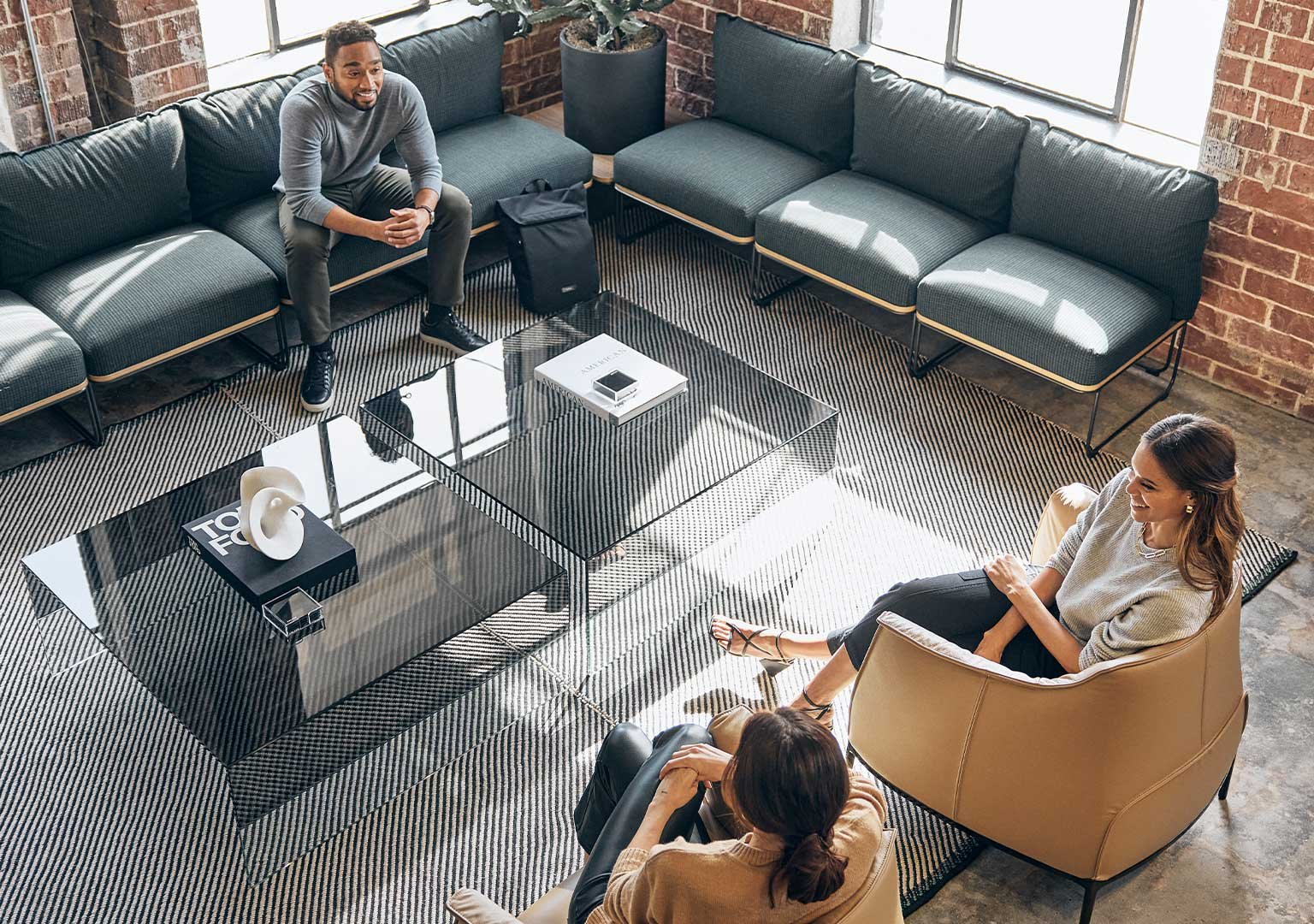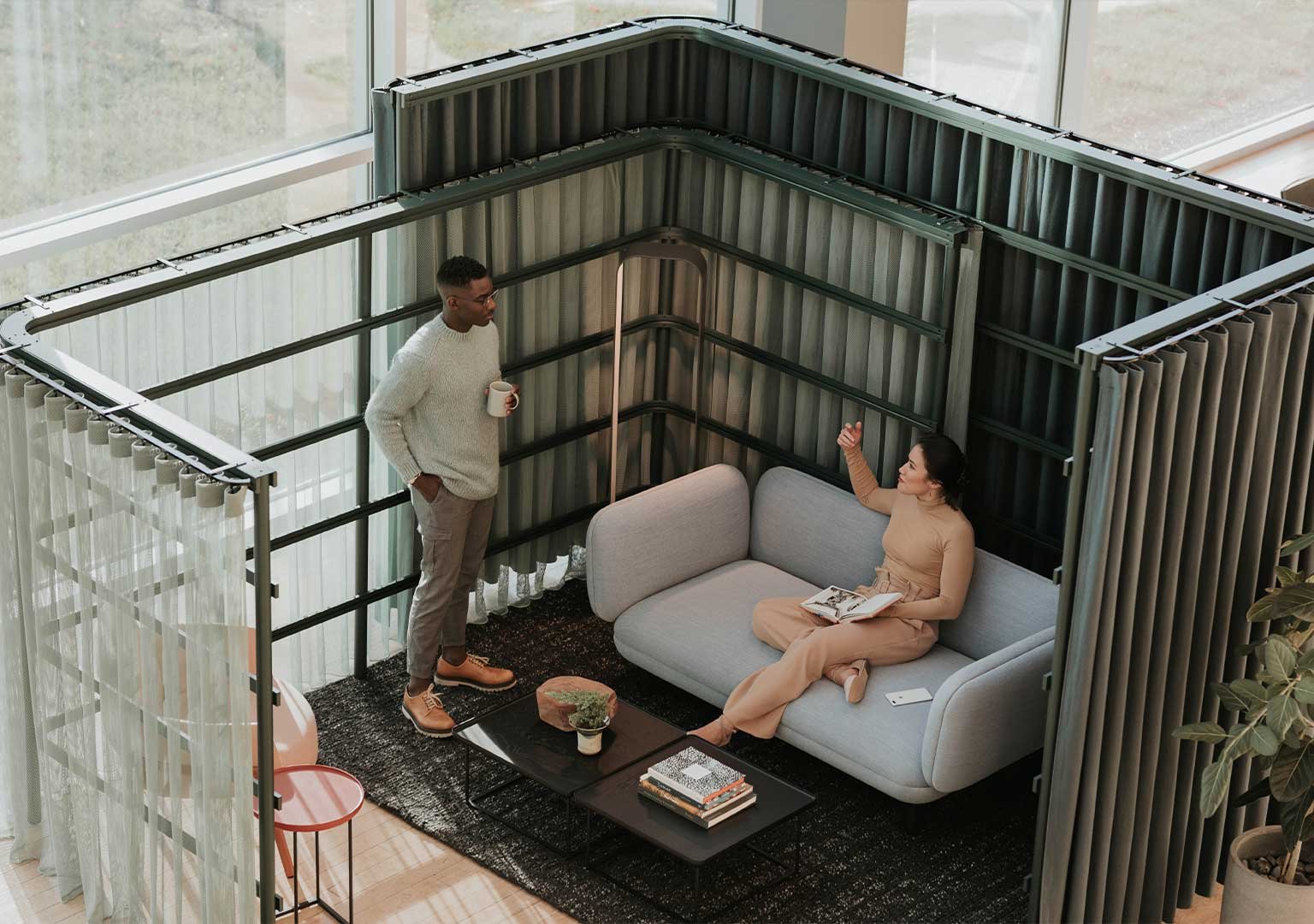In the post-pandemic era, the design of law firm offices has taken on new significance, evolving beyond a mere workspace into an emblem of the firm's culture and values. There is an increasing emphasis on creating engaging social spaces that not only attract and retain talent but also foster inclusion, flexibility, regeneration, and a human-centric design approach.
Higher Education Experiences and Hospitality Influences
University campuses are known for their diversity and inclusivity, with spaces designed to cater to a wide range of needs, interests, and abilities. This principle has been replicated in law firm offices, creating a workspace that is as diverse as its workforce.
Similarly, hospitality design, with its focus on comfort and user satisfaction, has inspired law firms to adopt a more flexible and regenerative approach to office design. This includes adaptable spaces that can be easily reconfigured for different purposes, and restorative spaces that prioritize employee well-being. Ultimately, these influences have guided law firms towards a more human-centric design philosophy, creating environments where every individual feels valued, included, and empowered to perform at their best.
Diversity
Inclusion is at the heart of this transformation. Modern law firm offices are being designed to reflect diversity, embracing different work styles and promoting a sense of belonging. Taking cues from higher education and hospitality sectors, firms are integrating more interactive and comfortable spaces into their environments. Lounges, huddle rooms, and open café spaces are becoming commonplace, inviting lawyers and staff to interact, collaborate, and engage in a more relaxed, social atmosphere.
Flexibility
Flexibility is another key driver of this change. With a growing preference for hybrid work models, law firms are rethinking traditional office layouts to accommodate the changing needs of their employees. The new office designs are characterized by open and adaptive strategies, featuring flexible layouts that can serve multiple purposes. This flexibility allows firms to adapt quickly to evolving business needs and employees' work processes.
Regeneration
The concept of regeneration is integral to the modern agile office design. By creating restorative spaces, law firms can enhance their employees’ well-being and productivity. Natural light, plants, and quiet areas for relaxation and contemplation are all part of this approach.
Human-Centric Design
The shift towards a more human-centric design in law offices reflects a broader change in workplace norms. This transformation goes beyond physical space; it embodies the new expectations around flexible and inclusive work practices. As law firms continue to adapt to these changes, they can thrive in the post-Covid era, attracting and retaining top talent while promoting a healthy and dynamic work environment.
Transformation of the Modern Law Office
Law firm office design draws heavily from the trends shaping the broader workspace design landscape. The emphasis on diversity, flexibility, regeneration, and a human-centric approach characterizes the shift from traditional office layouts to spaces that foster collaboration, inclusivity, and wellness. Driven by the experiences of higher education campuses and hospitality design, law firm offices are transforming into dynamic social spaces that not only meet the evolving needs of their teams but also reflect their core values and culture. This transformation is central to the ability of law firms to attract and retain top talent in the post-pandemic era. As workspaces continue to adapt and evolve, office design will play an increasingly crucial role in shaping the future of legal work environments.







